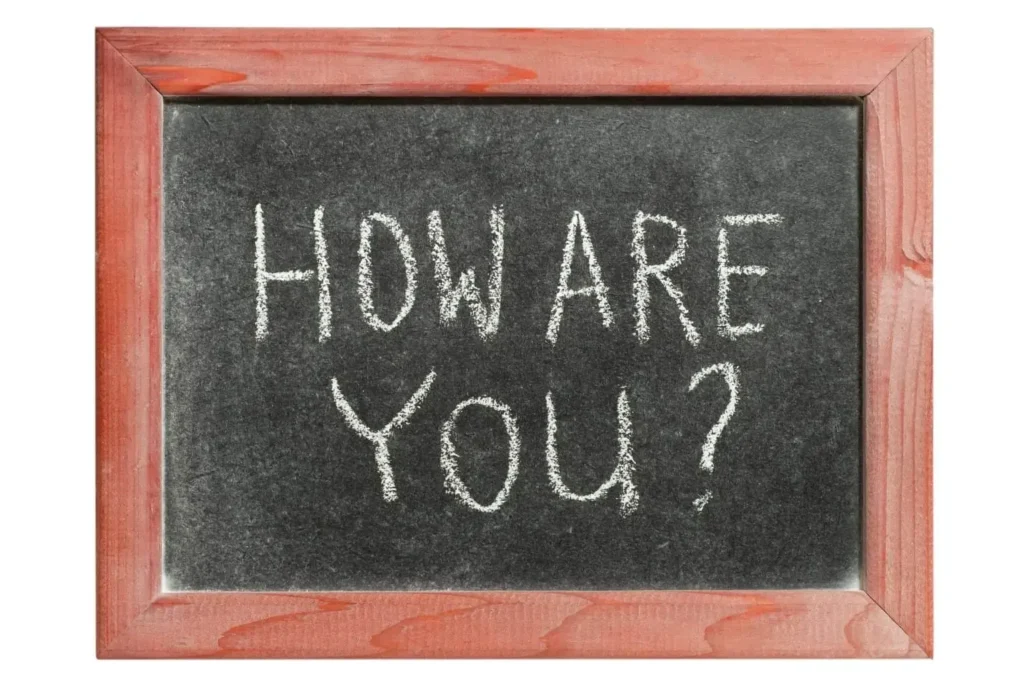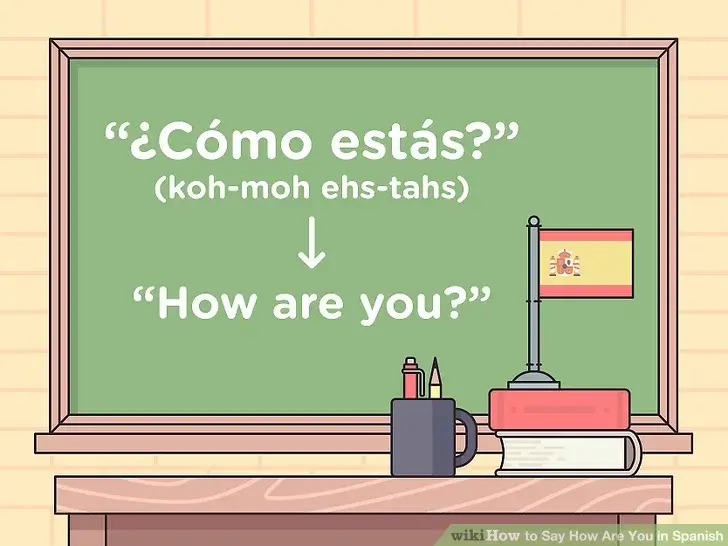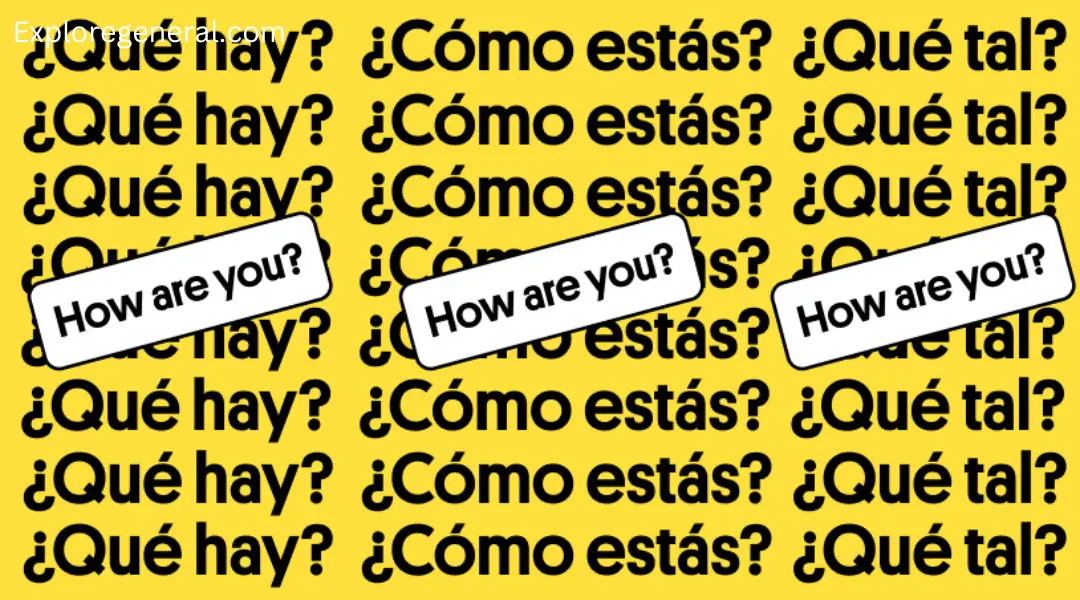The phrase “¿Cómo estás?” is one of the most commonly used expressions in the Spanish language. Translating to “How are you in Spanish?” in English, it serves as both a greeting and a genuine inquiry into someone’s well being. Despite its simplicity, the nuances of its use can vary significantly depending on the context, culture, and relationship between speakers. In this article, we will delve into the meaning, variations, cultural significance, and typical responses to this essential phrase in Spanish.

If you want some more information about What is a Latte then checkout our last blog post.
The Meaning of “Cómo Estás”
At its core, “¿Cómo estás?” is a polite way to ask about someone’s health or emotional state. However, its usage transcends mere curiosity about one’s physical condition. In many Spanish speaking cultures, asking this question is a way to express concern and show that you care about the other person.
Contextual Significance
In Spanish speaking countries, asking “¿Cómo estás?” often reflects social norms and cultural values. The phrase is more than just a routine greeting, it indicates an interest in the other person’s life. For example, in some contexts, such as when addressing a close friend, the tone can be casual and lighthearted. Conversely, in formal settings, such as a business meeting, the same question may be posed with a more serious tone, reflecting professionalism and respect.
Variations of “Cómo Estás”
While “¿Cómo estás?” is the standard form, various alternatives exist based on the region, level of formality, and the relationship between speakers. Understanding these variations is essential for effective communication.
Formal Variations
- ¿Cómo se encuentra usted?
- This formal version is often used in professional contexts or when addressing someone older or in a position of authority. It conveys respect and politeness.
- ¿Cómo le va?
- This phrase is slightly less formal than the previous one but still appropriate for professional settings. It conveys a friendly yet respectful tone.
Informal Variations
- ¿Qué tal?
- This colloquial phrase can be used in casual conversations among friends and family. It’s a relaxed way to ask someone how they are doing.
- ¿Cómo andas?
- This expression is common in several Latin American countries and carries a casual tone similar to “¿Qué tal?”
- ¿Qué pasa?
- Often used among friends, this phrase implies that the speaker is looking for more than just a status update; it can suggest an interest in any current events or happenings in the other person’s life.
If you want some more information about What is a Latte then checkout our last blog post.
Regional Differences
Different Spanish speaking countries have their own preferences and colloquialisms. For instance:
- In Mexico, “¿Qué onda?” is frequently used among younger people as a casual greeting.
- In Argentina, “¿Todo bien?” has become a popular way to ask how someone is doing.
- In Spain, “¿Qué tal?” is widely used and can easily replace “¿Cómo estás?” in everyday conversation.
Common Responses to “Cómo Estás”
Responses to “¿Cómo estás?” can vary widely, ranging from positive to negative, and are often influenced by cultural norms and the relationship between the speakers.
Positive Responses
- Bien, gracias. ¿Y tú?
- A standard response that not only answers the question but also reciprocates by asking the same in return.
- Todo bien.
- A concise and straightforward response indicating that everything is fine.
- Excelente, gracias.
- This enthusiastic reply conveys a very positive state of being.
If you want some more information about What is a Latte then checkout our last blog post.
Neutral Responses
- Ahí vamos.
- This response suggests that things are moving along but implies that they could be better.
- Más o menos.
- This phrase translates to “so so” and indicates that the person’s situation is neither good nor bad.
Negative Responses
- No muy bien.
- A straightforward response that communicates a lack of well-being.
- He tenido días mejores.
- This phrase gently implies that things haven’t been great, allowing for further discussion if the other person is interested.
The Importance of Honest Responses
The way we respond to “¿Cómo estás?” can significantly affect the conversation’s dynamics. In some cultures, being overly honest about one’s feelings might be seen as inappropriate, while in others, it’s valued. The key is to tailor your response to the context and your relationship with the person you’re speaking to.

The Role of “Cómo Estás” in Communication
Starting a conversation with “¿Cómo estás?” can set the tone for the entire interaction. This simple question serves as a gateway to deeper discussions about emotions, experiences, and personal well being.
Building Connections
The act of asking “¿Cómo estás?” can foster stronger bonds between individuals. When someone feels that you genuinely care about their well being, it can lead to a more open and trusting relationship. This is particularly important in professional settings, where trust can enhance teamwork and collaboration.
A Tool for Empathy
In times of hardship, a simple “¿Cómo estás?” can be a powerful invitation for someone to share their struggles. This question can lead to emotional support, making it easier for individuals to discuss their feelings and experiences. Empathy is crucial in communication, and this phrase is an excellent way to demonstrate it.
If you want some more information about What is a Latte then checkout our last blog post.
Cultural Contexts and Misunderstandings
While “¿Cómo estás?” is generally a benign inquiry, misunderstandings can arise, particularly for non native speakers. Some might perceive the question as merely a formality, while others may expect a deeper, more meaningful exchange. Recognizing these cultural differences is essential for effective communication.
Navigating Cultural Nuances
When interacting with Spanish speakers, being mindful of cultural contexts can enhance understanding. In some cultures, it is customary to provide a more detailed response, while in others, a simple “good” suffices. Being aware of these differences can prevent potential awkwardness or misinterpretation.
Importance of Non Verbal Cues
Non verbal communication, such as tone of voice, facial expressions, and body language, also plays a critical role in how “¿Cómo estás?” is perceived. For example, a warm smile while asking the question conveys genuine interest, while a rushed tone may suggest disinterest.

If you want some more information about What is a Latte then checkout our last blog post.
Conclusion
The phrase “¿Cómo estás?” is much more than a simple greeting in Spanish. it is a significant tool for connection and empathy. Understanding its nuances, variations, and the appropriate responses can enrich our interactions and deepen our relationships. Whether in a casual setting with friends or a formal meeting, knowing how to navigate this essential phrase can lead to more meaningful conversations.
Ultimately, everyone appreciates being heard and valued, and a heartfelt “¿Cómo estás?” can be the first step toward fostering a supportive and communicative environment. In the end, it’s not just about asking how someone is, it’s about showing that you genuinely care about their well being.



Pingback: What is a Latte? A Comprehensive Guide to the Beloved Coffee Beverage - exploregeneral.com
Pingback: Understanding and Resolving the "Navisworks Server Busy" Issue - exploregeneral.com
Pingback: 5 Essential Reasons Why Your Business Needs Insurance - exploregeneral.com